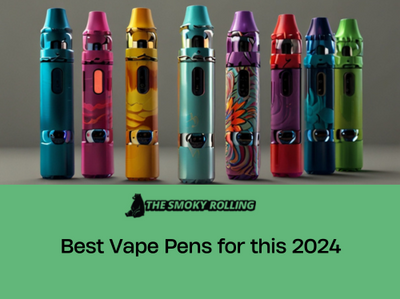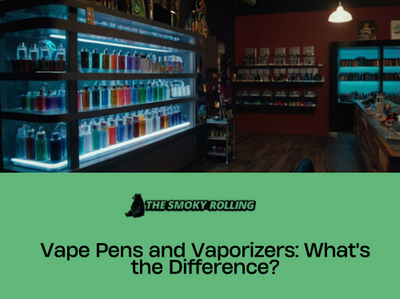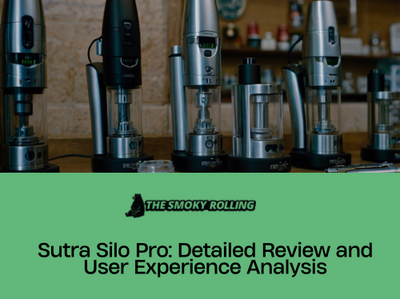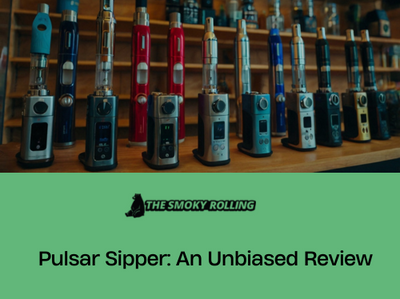Explore the essential differences between conduction and convection vaporization in our comprehensive guide. Learn how each method works, their unique benefits, and which one best suits your vaping preferences.
What is conduction?
Conduction heating involves direct contact between the heating element and vaporized material. This method transfers heat from the heating surface to the material, resulting in vaporization.
Pros and cons
Pros
- Quick Heat-up Time: Conduction vaporizers heat rapidly, allowing for almost instant vaping sessions.
- Efficient for Small Amounts: Ideal for users who prefer smaller, quick sessions, as conduction vaporizers can effectively vaporize small quantities of material.
- Simple Design: Conduction vaporizers often have straightforward designs, making them user-friendly and easy to use.
Cons
- Uneven Heating: Conduction heating can sometimes lead to uneven heating of the material, resulting in uneven vaporization and potential waste.
- Risk of Combustion: There's a higher risk of combustion with conduction vaporizers, especially if the material is packed too tightly or the temperature is too high.
- Potential for Material Degradation: Direct contact with the heating element can cause the material to degrade over time, affecting flavor and potency.
What is convection?
Convection heating involves heating the air around the material, which then passes through or around it, vaporizing the active compounds. When considering how to choose a vaporizer, prioritize factors like portability, temperature control, and compatibility with your preferred materials.
Delve into the temperature control features of the Seahorse Pro Plus with seahorse pro plus how to use.
Pros and cons
Pros
- Even Heating: Convection vaporizers typically provide more uniform heating, resulting in consistent vaporization and flavor.
- Reduced Risk of Combustion: Since the material doesn't come into direct contact with the heating element, there's a lower risk of combustion, leading to a cleaner and smoother vaping experience.
- Enhanced Flavor: Convection heating preserves the flavor profiles of the material better than conduction heating, resulting in richer and more nuanced vapor.
Cons
- Longer Heat-up Time: Convection vaporizers may take longer to reach the desired temperature than conduction vaporizers.
- Less Efficient for Small Amounts: Convection vaporizers may not be as efficient for small quantities of material, as they rely on air movement to vaporize the material.
- More Complex Design: Convection vaporizers often have more intricate designs and mechanisms, which may require more maintenance and care.
Are convection vaporizers more efficient than conduction vaporizers?
Generally, convection vaporizers are considered more efficient because they vaporize material more evenly and thoroughly, particularly for larger quantities. The convection heating method ensures more uniform heating, reducing the risk of uneven vaporization and potential waste.
Discover the cannabis vaping benefits, including convenience, discretion, and the ability to customize your experience with different strains and flavors.
Do convection vaporizers produce better flavor?
Yes, convection vaporizers tend to produce better flavor compared to conduction vaporizers. The convection heating process preserves the natural flavors and aroma of the material more effectively. As hot air passes through or around the material, it vaporizes the active compounds without direct contact with a heating element, resulting in a cleaner, smoother, and more flavorful vapor.
Explore the best concentrate for this season to enhance your vaping experience, whether you prefer fruity terpene profiles or potent THC concentrates.
Are convection vaporizers more expensive than conduction vaporizers?
Convection vaporizers generally tend to be more expensive than conduction vaporizers due to their more complex design and technology. However, prices can vary depending on factors such as brand, features, and build quality.
Find the perfect vaporizer for medical weed, ensuring it meets your specific needs such as precise temperature control for therapeutic benefits.
Which method can handle different types of materials?
Both conduction and convection vaporizers can handle various types of materials, including dry herbs, concentrates, and oils. However, convection vaporizers are often preferred for their versatility in handling different materials, as they provide more even heating and are less likely to cause combustion.
Can conduction vaporizers be used with concentrates?
Yes, many conduction vaporizers are designed to be used with concentrates, although they may require specific attachments or chambers to accommodate concentrates effectively. However, checking the manufacturer's specifications and recommendations is essential to ensure compatibility and optimal performance.
Learn how to clean a vaporizer effectively to maintain optimal performance and prolong its lifespan, ensuring a pure and flavorful vaping experience.
Convection vs Conduction FAQS
Which heating method is more consistent: convection or conduction?
Convection heating is generally considered more consistent than conduction heating. Convection vaporizers provide more even heating by circulating hot air around the material, resulting in a more uniform vaporization process and consistent vapor quality.
Understand the vape pens components, including the battery, heating element, and cartridge, to make informed decisions about your vaping setup.
Which method of vaporizers can be used with a water pipe?
Both convection and conduction vaporizers can be used with a water pipe, depending on their design and compatibility. Many vaporizers feature adapters or attachments that allow them to connect to a water pipe for smoother and cooler vapor.
Discover the best vapes for CBD oil, designed to deliver the therapeutic benefits of cannabidiol in a convenient and efficient manner.








